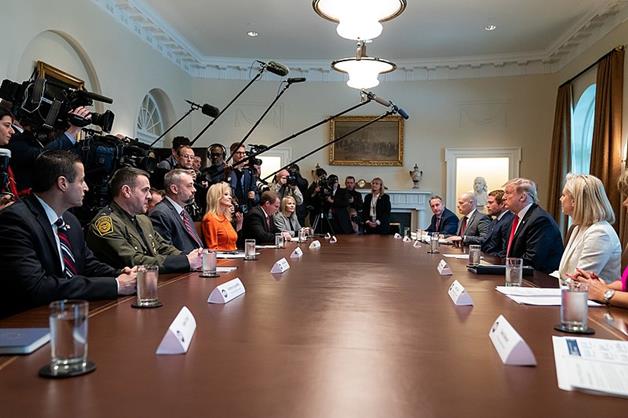Immigration is to Donald Trump what Central America was to Ronald Reagan. It’s where a presidency would succeed or fail. When Reagan left office, the Sandinista were still in power in Nicaragua, but the Cold War, as anyone could see, was winding down. And it did just that, on Nov. 9, 1989, with the collapse of the Berlin Wall. Mission accomplished.
Reagan’s foreign policy had the support of the Republican Party caucus, not to mention dozens of long-lost Boll Weevil Democrats. On immigration, Trump has been dealt a weak hand. Republicans did not want Trump to win the nomination, they certainly didn’t want him to be elected president. On immigration, Donald Trump isn’t necessarily one of us. He isn’t moved by demographic changes or multiculturalism. What does bother him deeply are Americans dying at the hands of illegal aliens, plus such people bringing illicit drugs into the country. Donald Trump gives a damn. For that alone, he deserves our support.
For his first two years, Trump had a Republican majority in both houses. Didn’t matter. The speaker was Paul Ryan, the pro-immigration devotee of Jack Kemp. If Ryan had supported legislature crafted by House Judiciary Chairman Robert Goodlatte (R—VA), it could have passed the House, putting pressure on Mitch McConnell to do the same in the Senate. Goodlatte’s bill wasn’t perfect; to please Plains States Republicans it allowed for guest workers, but it also funded the wall, mandated e-verify for employers, while ending chain migration and the diversity lotto. It was the best immigration bill to come out of Congress since the 1920s. Trump, for his part, endorsed similar legislation by Senators David Perdue (R—GA) and Tom Cotton (R—ARK) which also reduced legal immigration. Afterwards, Ryan went on television to voice his opposition to such reductions.
The 115th Congress represented Paul Ryan’s revenge on the Trump presidency—or was it Jack Kemp’s? A frustrated Trump gave up on Ryan and planned on waiting until 2019 to get such legislation passed. Trump apparently was sure the GOP would retain control of the House of Representatives, which, of course, did not happen.
Thirty years ago, Chronicles singlehandedly introduced the immigration issue to America. The March 1989 number was later described by Mark Gerson was “one of the most controversial issues…in the history of American conservative journalism.” Who can forget the uproar it ignited? It’s too late to quit, now. Here’s one way of looking at it: In 1994, California voters stunned the country by approving of a tough, anti-illegal immigration Proposition 187 measure. The Clinton Administration quickly set up a commission headed by former congresswoman Barbara Jordan to study the issue. It came up with some mild measures to reduce immigration. In 1996, 158 of the 235 Republicans in Congress voted to approve cuts in legal immigration. The bill failed and the 77 Republicans who voted “nay” were booed as they left the floor. In the Senate, 20 of 53 Republican senators voted for those same restrictions. Bob Dole, who had just defeated Pat Buchanan for the presidential nomination, voted against the reductions. He lost handily to Bill Clinton in the fall. Twenty-two years later, up to 200 Republicans voted for the Goodlatte measure. Forty voted no. It, too, failed. In the Senate, 37 of 51 Republicans voted for the Perdue-Cotton bill.
This may be grasping at the straws, but progress has been achieved. Victory is possible. We don’t need a Reagan party or God forbid, a return to the Bush GOP. Let’s go back to the party of Harding and Coolidge, instead. President Trump has now made illegal immigration the top issue in America. He has issued a national emergency to construct his wall. He needs also to sign an executive order to abolish birthright citizenship. Finally, Trump needs to return to his earlier support for legal reductions. And think about it, the next time the Republicans control the House, Paul Ryan won’t be speaker.
Joe Scotchie’s most recent book is Writing on The Southern Front (Routledge).

Leave a Reply